Your cart is currently empty!
5 Essential Fall Rescue Tips Every Workplace Must Know
Accidents can happen at any workplace, and when it involves a fall, immediate and efficient response is crucial. In this blog post, we’ll discuss five vital fall rescue tips to ensure the safety of workers and minimize potential risks. From relieving suspension trauma to having a well-prepared plan, these strategies can make a significant difference in the outcome of a fall-related emergency.
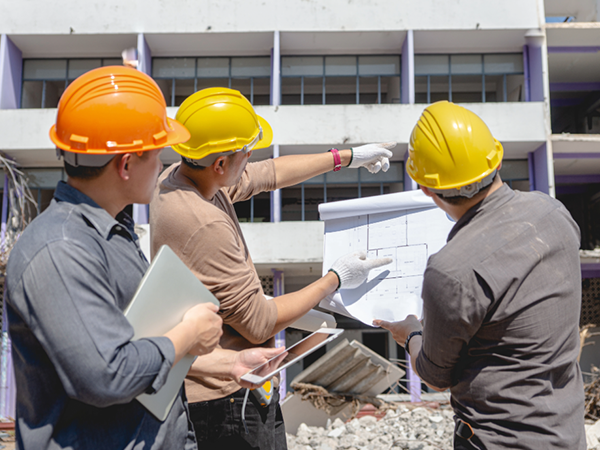
#1. Develop a Plan and Embrace the 3P’s – Plan, Prepare, Practice:
While it might seem obvious, one of the most common and significant mistakes in fall protection is the absence of a rescue plan altogether. Having a comprehensive rescue plan is a cornerstone of effective fall rescue operations. The plan acts as a roadmap, guiding response teams through the critical steps necessary to mitigate the impact of a fall. It is essential to understand that rescue plans are not one-size-fits-all; they should be tailored to the specific risks and challenges inherent to the work environment. To assist in the development of a proper rescue plan, you can download a rescue plan template and refer to resources that provide guidelines on creating a plan that aligns with industry best practices.
A well-thought-out rescue plan involves meticulous planning, which includes identifying potential fall hazards, assessing the work environment, and considering various scenarios that may arise during a fall emergency. The plan should be dynamic, and capable of adapting to different situations to ensure its effectiveness. By addressing these factors during the planning stage, your team can proactively prepare for potential challenges, making the rescue process more streamlined and efficient.
Embracing the 3P’s – Plan, Prepare, Practice – is essential to reinforcing the effectiveness of the rescue plan. The second phase, preparation, involves ensuring that all team members are equipped with the necessary knowledge and skills to execute the rescue plan seamlessly. This may include providing specialized training, ensuring access to appropriate rescue equipment, and identifying key roles within the team. Regular drills and training sessions form the third phase, practice, cultivating a culture of preparedness and responsiveness among team members. These sessions enhance individual proficiency and promote teamwork and coordination, crucial elements in the successful execution of a fall rescue operation.
The absence of a rescue plan is a critical oversight in fall protection. Developing a comprehensive plan, tailored to the specific challenges of the work environment, is crucial for effective fall rescue. Embracing the 3P’s – Plan, Prepare, Practice – ensures that the team is well-prepared and proficient in executing the rescue plan flawlessly. Regular training and drills further enhance the team’s readiness, fostering a proactive approach to fall protection and rescue operations. Download a rescue plan template and explore resources to guide you in developing a robust rescue plan that aligns with industry standards.
#2. Relieve Suspension Trauma Immediately
One of the most critical aspects of fall rescue is addressing suspension trauma promptly. When a worker falls and is left hanging in a harness, blood can pool in their legs, leading to unconsciousness and serious complications. To mitigate this risk, ensure that your rescue plan includes swift measures to relieve suspension trauma. Provide training to workers on self-rescue techniques or have a dedicated rescue team ready to intervene promptly.
Recognizing the gravity of suspension trauma underscores the vital need for prompt intervention and efficient rescue tactics. Suspension trauma, also referred to as orthostatic intolerance, manifests when an individual is suspended in a harness, leading to the pooling of blood in the lower extremities. This condition poses risks of unconsciousness, cardiac arrest, and other life-threatening complications. According to the guidelines set by the Occupational Safety and Health Administration (OSHA), suspension trauma can initiate within 5-30 minutes after a fall, emphasizing the necessity for swift and decisive measures. While Emergency Medical Services (EMS) response times vary across the country, averaging around 10 minutes, the onset of suspension trauma can occur in as little as 5 minutes. Therefore, it is imperative to have EMS readily available and a well-established plan to eliminate suspension trauma.
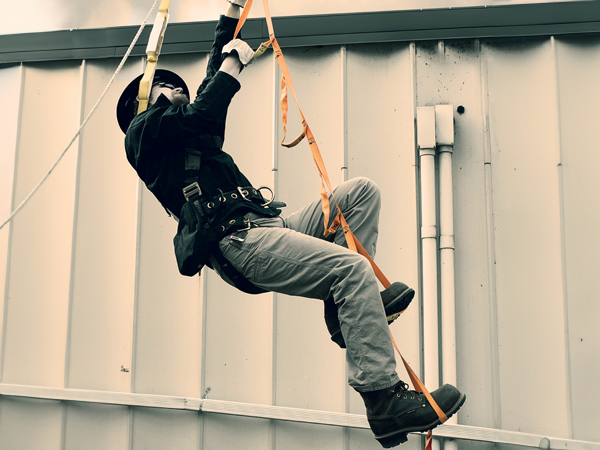
In such critical situations, innovative solutions can make a significant impact. FrenchCreek’s URES-Q products offer a valuable tool for fall rescue scenarios. These products are equipped with a deployable ladder that the fallen worker can step into, alleviating harness tension from the legs. This feature provides additional time for the rescue team to perform their duties effectively. The URES-Q’s ladder deployment offers a proactive solution to address suspension trauma promptly, emphasizing the need for versatile and efficient equipment in fall rescue operations.
Importantly, the fallen worker may not always be conscious or may be incapacitated due to injuries, making it challenging for them to deploy suspension trauma straps. In the field where every second can be critical, having tools to expedite the rescue process can differentiate between a successful outcome and a potentially life-threatening situation.
#3. Have EMS on Standby and Notify Local Authorities:
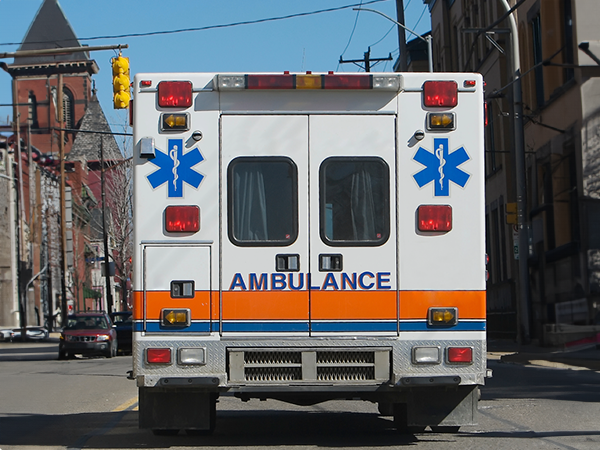
Notifying Emergency Medical Services (EMS) in advance holds immense importance within a fall protection rescue plan, particularly given the intricate challenges posed by modern construction and evolving property dynamics. This strategic approach aligns with the comprehensive property preplans integral to firefighting operations, where incident response planning encompasses considerations for falls and rescues. By informing EMS ahead of time, emergency responders gain access to critical information outlined in preplans. This includes details about potential access barriers, specific building construction features, hazardous materials’ presence, and fire protection systems’ location.
This proactive communication serves a dual purpose. Firstly, it ensures that EMS is well-informed about the specific challenges associated with the site, allowing them to tailor their response plan accordingly. In scenarios involving falls, this becomes especially crucial, as responders can access details like the defensible space around the building, available turn-around capability, and the potential presence of occupants requiring special assistance. This comprehensive information is paramount for orchestrating a swift and effective rescue, considering the complexities that may arise in a fall-related emergency.
Simultaneously, the proactive approach of having EMS, including 911, on standby and informing local municipalities about the nature of the work being conducted in the area further enhances the fall protection rescue plan. Time sensitivity is emphasized in any fall-related emergency, making rapid response a priority. The coordination between notifying EMS in advance, having standby services, and informing local authorities underscores a holistic strategy that significantly elevates the overall preparedness and responsiveness of the rescue plan. This integrated approach not only maximizes the chances of successful outcomes in emergencies but also optimizes the use of time and resources, essential factors in mitigating the risks associated with working at heights.
#4. Know the Strengths and Weaknesses of Your Team Members:
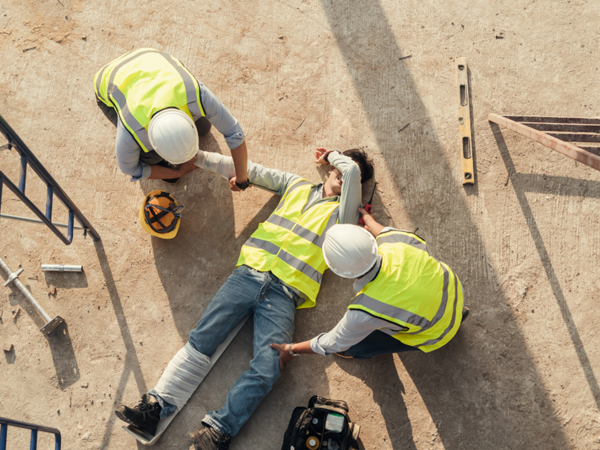
In the event of a fall, it becomes imperative to seamlessly integrate team members into specific roles within the active rescue operation, recognizing that individual responses to high-stress situations may vary. Assigning tasks with precision is essential to maintaining a controlled and effective response. For instance, team members like Bill may be directed to execute critical actions such as retrieving a ladder for rescue, while others, like Joe, could be designated to manage external logistics such as flagging in emergency medical services.
It is crucial to acknowledge that not all team members may be suitable for active rescue roles, as some may experience heightened anxiety or emotional distress that could potentially exacerbate the situation. A scenario where an individual, like Bob, is visibly anxious and worked up highlights the necessity of a nuanced approach. In such instances, the optimal course of action is to tactfully remove them from the immediate scene, ensuring their well-being and preventing any inadvertent escalation of the emergency.
A strategic and professional approach to fall protection rescue planning involves recognizing and accommodating the diverse responses of team members in high-pressure situations. Even a proficiently trained rescuer may swiftly feel overwhelmed by emotions and anxiety when faced with a real emergency. By assigning roles judiciously and considering individual capacities, the team can enhance its overall efficiency and maintain a composed demeanor during critical rescue operations.
5. Provide Space and Support for the Employee:
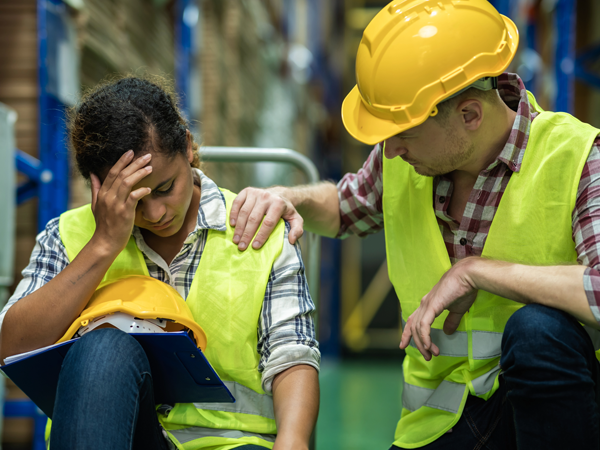
In the aftermath of a fall incident, it is imperative to recognize that the affected employee may undergo a spectrum of emotions, ranging from fear and panic to embarrassment or distress. Providing the necessary space for them to process these emotions is crucial for their well-being. It is essential to refrain from crowding the individual, offering instead a supportive environment and emotional assistance during this challenging time. Acknowledging that they might be having a difficult day and extending a helping hand further reinforces a compassionate workplace culture.
Moreover, it is important to consider the potential physical impact of the fall. While ideally, the fallen worker’s injuries are not critical, it is essential to ensure a gradual and supportive reintegration into tasks involving working at heights. This process acknowledges the potential psychological effects of the incident, helping the individual regain confidence in their abilities. Providing necessary training, additional safety measures, and regular check-ins can contribute to a smoother transition back to height-related tasks.
In the broader context of workplace safety, it is advisable to consistently review and reassess the fall protection plan. This proactive approach allows for the identification and elimination of any potential fall hazards, thereby fortifying the overall safety framework. Regular evaluations ensure that the fall protection plan remains dynamic and responsive to the evolving needs of the workplace, fostering a culture of continuous improvement in safety practices. This commitment not only mitigates potential risks but also underscores the organization’s dedication to creating a secure and supportive work environment.
To Sum It Up:
Safeguarding workers in the event of a fall requires a holistic and proactive approach. The five fall rescue tips discussed in this article underscore the importance of meticulous planning, timely intervention, effective communication, strategic team management, and compassionate post-incident support. By adhering to these essential guidelines, workplaces can significantly minimize potential risks and enhance the overall safety and well-being of their personnel.
As a leading provider of fall safety solutions, FrenchCreek Fall Safety offers comprehensive rescue plans tailored to your specific workplace needs. Our commitment to ensuring the highest standards in fall protection includes providing valuable tools and resources for developing and implementing effective rescue strategies.
For further insights into developing a robust rescue plan, we invite you to explore our dedicated blog article on the subject. Continuous education and staying informed about industry best practices are essential components of fostering a safety-conscious culture within your organization.
Remember, accidents can happen, but a well-prepared and knowledgeable team, equipped with the right tools and strategies, can make all the difference in ensuring a swift and successful response to fall-related emergencies. Choose FrenchCreek Fall Safety to be your partner in creating a secure and supportive work environment for your employees.